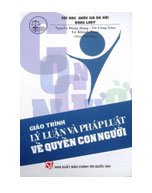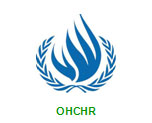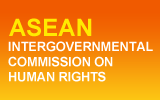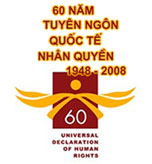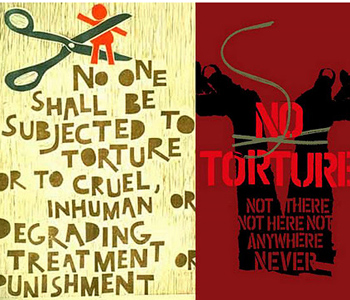
COMMITTEE AGAINST TORTURE MARKS ITS TWENTY-FIFTH ANNIVERSARY
The Committee against Torture this afternoon marked 25 years since its first session and held two panel discussions focused on identifying the main achievements and challenges faced by the Committee and on the obligation of States parties with regard to redress for victims of torture, in light of General Comment 3 on Article 14 of the Convention against Torture and Other Cruel, Inhuman or Degrading Treatment or Punishment.
Ibrahim Salama, Director of the Human Rights Treaties Division of the Office of the High Commissioner for Human Rights, in his opening remarks said the Committee against Torture was the smallest treaty body in terms of the number of experts and this created a very interesting dynamic, both in focus and in methods of work. The marks of the Committee were its creative thinking and learning from others.
Also in opening remarks, Claudio Grossman, Chairperson of the Committee against Torture, noted that torture unfortunately continued to be practiced in most countries on earth and this was possible due to the dehumanization of the victim, the torturer and the society at large. But the world reacted and most States agreed that freedom from torture was a non-derogable right, that there was a duty to investigate and punish crimes of torture and to provide full and adequate redress and reparation to victims, and that individuals could not be sent to countries where they might be tortured.
Xuexian Wang, Committee Expert acting as the moderator of the panel identifying the main achievements and challenges faced by the Committee against Torture, invited those who were not members of the Committee to use it as a platform to provide their view of the work of the Committee.
The panellists were Juan Mendez, Special Rapporteur on torture, who said that in many countries there was an urgent need to establish mechanisms that could guarantee qualified, impartial and independent forensic examination of detainees; Martin Bang, Permanent Representative of Denmark, who recognized that one of the future challenges facing the Committee was the heavy workload, and that a long-term solution must be found within the framework of the wider discussion on treaty bodies strengthening; Cheikh Tidiane Thiam, Permanent Representative of Senegal, who encouraged the Committee to continue with its efforts to support States to enact the absolute prohibition of torture; and Peter Splinter, Amnesty International, who said that the Committee’s task was extremely difficult and complex, not only in seeking to reveal the use and extent of torture and ill-treatment, but also in responding to their new manifestations and attempts to undermine the absolute prohibition.
Felice Gaer, Committee Expert acting as the moderator of the panel on the obligation of States parties with regard to redress for victims of torture, in light of General Comment 3 on Article 14, noted the decisive role played by the Committee in efforts to combat torture.
Panellists were Elizabeth Abi-Mershed, Inter-American Commission for Human Rights, who spoke about a high degree of complementarity between the Commission and the Committee against Torture with regard to the standards being developed and the challenges both were facing; Mercedes Doretti, Chairperson of the Board of Trustees of the United Nations Voluntary Fund for Victims of Torture, who stressed that General Comment 3 on Article 14 spelled out clearly both the rights of victims and the obligations of States in this regard; Christian Streeter, Permanent Mission of Chile to the United Nations Office at Geneva, who described measures taken by Chile to provide redress and reparation to victims of torture committed between 1973 and 1990; and Sarah Fulton, REDRESS, who said that achieving redress for victims of torture was hard and its ultimate purpose was the restoration of the dignity of the victim.
Taking part in the discussion were Ecuador, Switzerland and Argentina, as well as the following non-governmental organizations: International Disability Alliance, Association for the Prevention of Torture, Afghanistan Commission on Human Rights, International Rehabilitation Council for Torture Victims, Northern Ireland Human Rights Commission, the Canadian Association of University Women and Freedom from Torture.
The next public meeting of the Committee against Torture will be at 10 a.m. on Wednesday, 8 May, when it will start its examination of the initial report of Mauritania ( CAT/C/MRT/1).
Opening Remarks
IBRAHIM SALAMA, Director of the Human Rights Treaties Division of the Office of the High Commissioner for Human Rights, said that the Committee against Torture was the smallest treaty body in terms of the number of experts and this created a very interesting dynamic, both in focus and in methods of work. The marks of the Committee were its creative thinking and learning from others.
CLAUDIO GROSSMAN, Committee Chairperson, said that the Committee against Torture supervised compliance with the Convention against Torture and Other Cruel, Inhuman or Degrading Treatment or Punishment adopted in 1984, which currently had 153 States parties. The commitment and the work of the Committee had greatly contributed to realizing the goals of the Convention. As a result of the work of the Committee, many States had incorporated a definition of torture in national legislation, excluded from consideration in judicial proceedings confessions extracted under torture, investigated and punished the crime of torture taking into account its gravity, ratified numerous treaties including the Optional Protocol, the Rome Statute and others, and utilized the Istanbul Protocol which was an invaluable guide to doctors, lawyers and judges to prevent, identify and document cases of torture.
Unfortunately, torture continued to be practiced in most countries on earth and this was possible due to dehumanization; torture was not about other human beings but about “sources of information”, “information assets” or “threats to society”, so that the individual disappeared. Torturers were also dehumanized and they were defined by roles such as “security experts” who neatly compartmentalized portions of their lives. This dehumanization extended to the society at large, which conveniently ignored what it did not want to know and continued to mind its own business. The world reacted against torture and most States agreed that freedom from torture was a non-derogable right, that there was a duty to investigate and punish crimes of torture and to provide full and adequate redress and reparation to victims, and that individuals could not be sent to countries where they might be tortured. In closing, Mr. Grossman reaffirmed the value of the absolute prohibition of torture and said that the legal tradition in international law also gave a resounding no.
Panel on Identifying the Main Achievements and Challenges Faced by the Committee against Torture
XUEXIAN WANG, Committee Expert acting as the moderator, said that the panel should be a platform for those who were not members of the Committee as onlookers often had a better view of the whole game and the work of the Committee. Too much praise would blind the Committee and its members welcomed criticism.
http://www.unog.ch/unog/website/news_media.nsf/%28httpNewsByYear_en%29/D891EC48D00BC3CCC1257B6400464BC9?OpenDocument#

